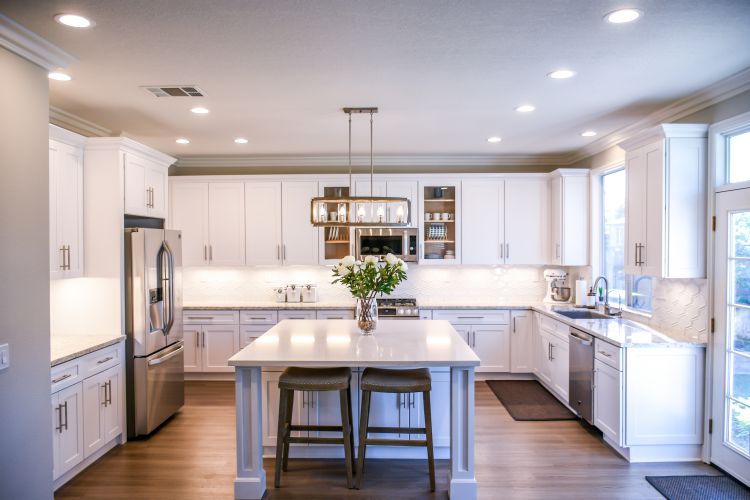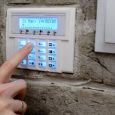 As the world continues to face the catastrophic outcomes of climate change, we must take steps to minimize our carbon footprint. One highly effective approach towards achieving this goal is enhancing the energy efficiency of our homes.
As the world continues to face the catastrophic outcomes of climate change, we must take steps to minimize our carbon footprint. One highly effective approach towards achieving this goal is enhancing the energy efficiency of our homes.
In the United States alone, residential buildings account for a staggering 21% of total energy consumption. That is a significant amount of energy that can be saved by implementing energy-efficient upgrades.
According to the U.S. DOE (Department of Energy), homeowners can save up to 30% on their energy bills by adopting energy-efficient measures.
Improving your home’s energy efficiency helps preserve the environment, yields financial savings, increases home value, and enhances overall comfort. And with the various eco-friendly options available today, it is much easier than ever.
Now, let us discuss the most effective ways to make your home energy efficient:
1. Roof Maintenance
When it comes to energy efficiency, the roof of your home is among the most crucial components. A damaged or poorly maintained roof can cause air and water leaks, leading to higher energy costs.
Another crucial aspect of roof maintenance is ensuring that your roof drainage system functions properly. Water damage caused by leaky roofs can increase the energy required to heat or cool your home.
One viable solution to prevent water damage is the installation of TPO roof drains, which efficiently removes water from your roof while maintaining your home’s energy efficiency.
These drains are made from a thermoplastic material called Thermoplastic Olefin, known for its durability, flexibility, and resistance to weathering. This material also helps reflect heat and UV rays from the sun, reducing the energy needed to cool your home.
2. Energy-efficient Lighting
LED lights are one of the most efficient lighting options available today. They use up to 75% less energy than the conventional incandescent bulbs and even last longer, and emit less heat, making them safer and more cost-effective.
Consider using LED bulbs with a warm color temperature for a cozy and inviting atmosphere for general lighting. For task lighting, such as reading or cooking, look for LED bulbs with a cool color temperature for improved visibility. Additionally, dimmer switches can help save energy and create ambiance.
It is also essential to check the lumens and wattage when choosing LED bulbs. Lumens indicate the light emitted by the bulb, while wattage refers to the energy used. A higher lumen count and lower wattage mean a more efficient bulb.
3. Upgrade Appliances
Investing in energy-efficient appliances is a wise decision that can lead to significant savings on your energy bills while also helping to minimize your carbon footprint. Energy-efficient appliances are designed to perform the same tasks using less energy, making them a more sustainable option for your home.
When choosing energy-efficient appliances, look for those with an Energy Star label. The label ensures that the appliance meets specific energy efficiency standards defined by the US Environmental Protection Agency (EPA).
Additionally, choose appliances that are appropriately sized for your household’s needs. Bigger appliances use more energy, so opting for a smaller, more efficient model can significantly affect energy consumption.
4. Use Smart Technology
Smart devices allow you to remotely control and automate various appliances and systems, helping you save energy and money. Some examples include:
- Smart thermostats allow you to control your home’s heating and cooling system remotely, adjusting the temperature based on your schedule and preferences.
- Smart sprinklers use weather data to optimize watering schedules, reducing water usage and costs.
- Water leak detectors can alert you about leaks, preventing water waste and damage to your home.
- Smart plugs allow you to remotely control the power supply, saving energy and reducing bills.
- Smart locks help you monitor access to your home and can be programmed to save energy.
5. Upgrade HVAC Systems
HVAC systems are designed to control the indoor environment of buildings, including homes. The heating component of an HVAC system is responsible for maintaining a comfortable indoor temperature during colder months, while the cooling component helps to regulate the indoor temperature during hotter months.
Modern HVAC systems use advanced technology to optimize performance and reduce energy waste. Some features include variable-speed fans, programmable thermostats, and smart controls that allow you to monitor and adjust temperature settings remotely.
Additionally, modern HVAC systems include air filtration and humidity control features that can help improve indoor air quality and maintain a healthy environment.
6. Fight Phantom Power Consumption
Phantom power consumption, also known as standby or vampire power, refers to the electronic energy devices consumed when turned off but still plugged in. These devices continue to draw small amounts of power to maintain standby modes or to keep the display clocks running.
The U.S. DOE (Department of Energy) reports that standby power may contribute to 10% of your total household electricity consumption, leading to increased expenses on your energy bills.
One easy way to fight phantom power consumption is to plug your electronic devices and countertop appliances into a power bar and program it to switch off at night or when not in use. It can help you reduce electricity usage and save money on energy bills.
7. Install Ceiling Fans
Ceiling fans are a great way to improve your home’s energy efficiency while keeping it comfortable all year round.
During summer, a ceiling fan combined with an air conditioner can save money by allowing you to raise the thermostat a few degrees without sacrificing comfort. Moving air from the fan evaporates sweat, making you feel cooler.
In winter, a ceiling fan can distribute warm air evenly throughout your home by running in reverse, pulling warm air from the ceiling, and circulating it back into the room, reducing the need for heating.
When installing a ceiling fan, choose the right size for your room to ensure proper air circulation and avoid excessive noise. Opt for an ENERGY STAR labeled fan to save up to 60% energy compared to conventional models.
8. Install Solar Panels
Solar panels can efficiently decrease dependence on conventional energy sources while reducing energy expenses. Through the photovoltaic effect, solar panels transform sunlight into electricity. Once exposed to sunlight, the solar panels generate electricity that can be utilized to power your household.
While the initial investment may seem daunting, solar panels can provide long-term savings and generate income through net metering programs.
Conclusion
Optimizing your home’s energy efficiency can significantly impact the environment and your personal expenses. The strategies outlined in this article can help reduce your carbon footprint and energy consumption while increasing comfort levels in your home.
So, by taking proactive measures today, you can contribute to a more sustainable future for generations while reaping the benefits of lower energy costs and increased home value.




